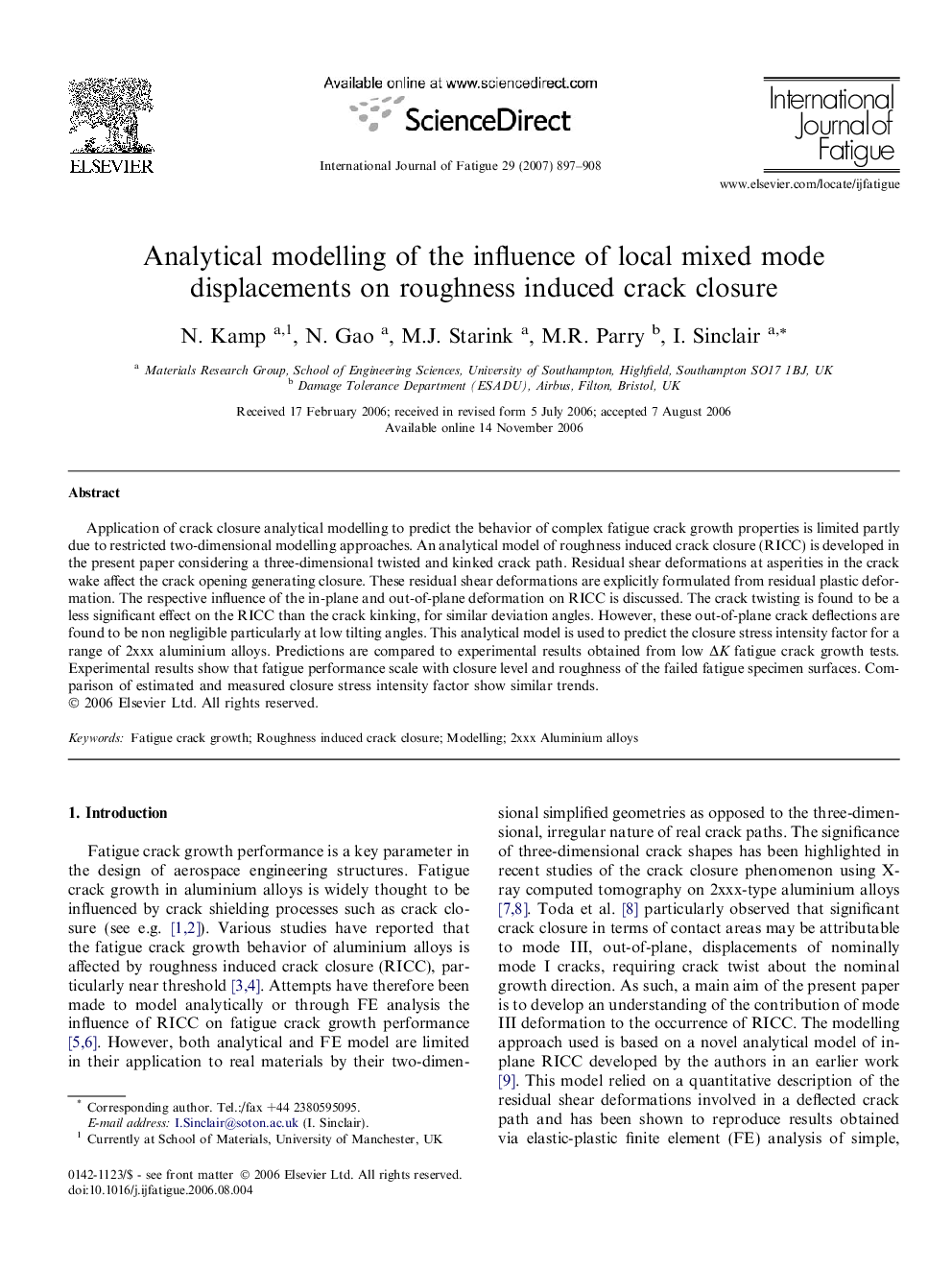| Article ID | Journal | Published Year | Pages | File Type |
|---|---|---|---|---|
| 781701 | International Journal of Fatigue | 2007 | 12 Pages |
Application of crack closure analytical modelling to predict the behavior of complex fatigue crack growth properties is limited partly due to restricted two-dimensional modelling approaches. An analytical model of roughness induced crack closure (RICC) is developed in the present paper considering a three-dimensional twisted and kinked crack path. Residual shear deformations at asperities in the crack wake affect the crack opening generating closure. These residual shear deformations are explicitly formulated from residual plastic deformation. The respective influence of the in-plane and out-of-plane deformation on RICC is discussed. The crack twisting is found to be a less significant effect on the RICC than the crack kinking, for similar deviation angles. However, these out-of-plane crack deflections are found to be non negligible particularly at low tilting angles. This analytical model is used to predict the closure stress intensity factor for a range of 2xxx aluminium alloys. Predictions are compared to experimental results obtained from low ΔK fatigue crack growth tests. Experimental results show that fatigue performance scale with closure level and roughness of the failed fatigue specimen surfaces. Comparison of estimated and measured closure stress intensity factor show similar trends.
